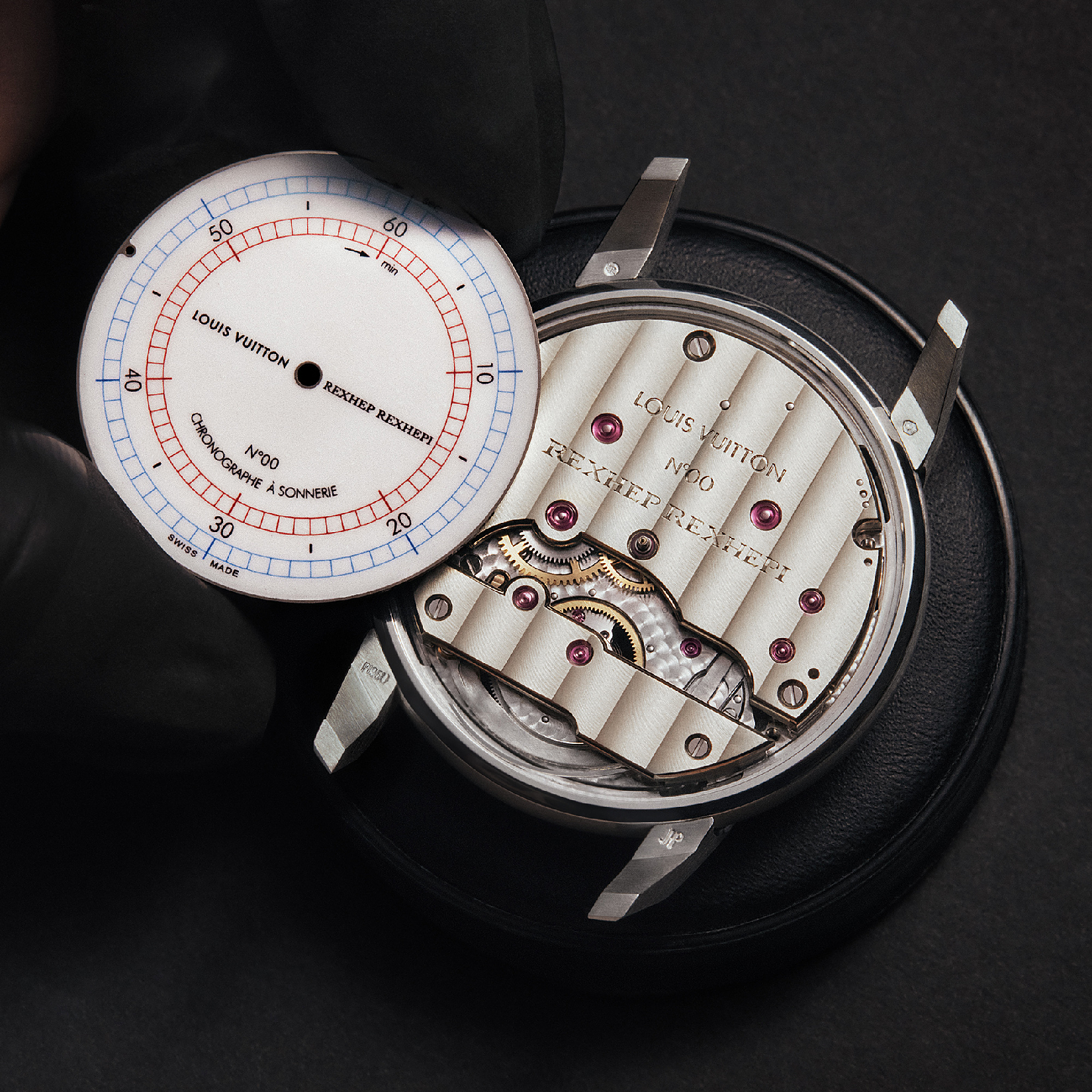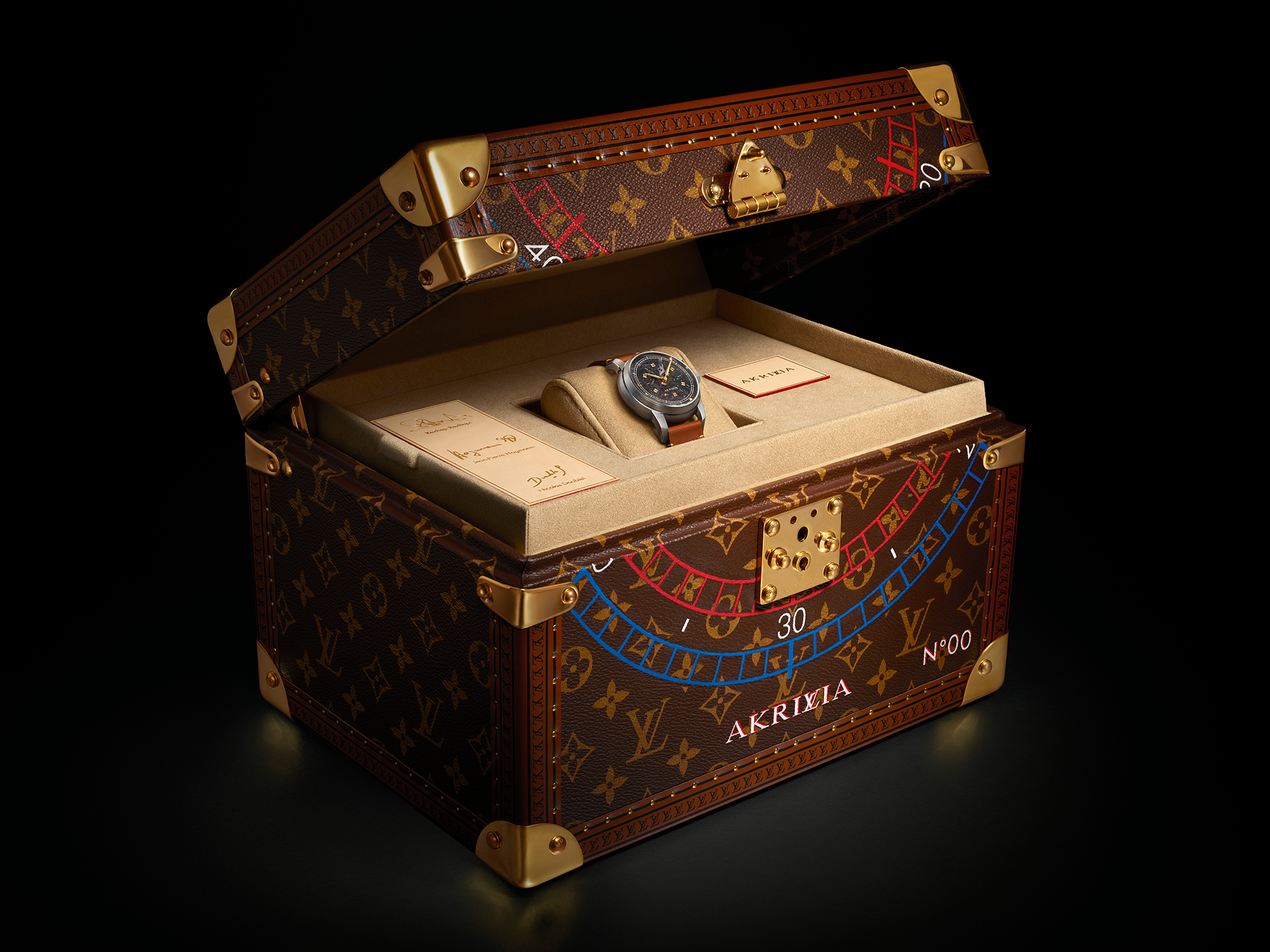The role of independent watchmaking in the industry is changing
For decades, modern independent watchmaking was always a small niche. It occupied a layer of the watch industry that catered to a very small, often ultra-enthusiastic group of collectors and purists. Run by craftspeople who broke away from working directly for bigger brands and conglomerates, these artist-led workshops typically never produced more than 100 watches per year, some as small as 1-2 watches per year. On this layer of the watch industry, indies signaled something strong to those that were in the know, but there was, by nature of extremely small production volumes, no mass appeal.
Fast forward, there are plenty of indies with global brands, much larger (if still relatively small) production volumes, and timepieces sold out years in advance. With its rapid growth, the role of independent watchmaking in the industry is changing, and nothing indicates that more than LVMH’s collaboration with Akrivia in the LVRR-01 Chronographe à Sonnerie.
We’re digging into what we view as a significant shift in the industry by looking at what Louis Vuitton watchmaking is doing with indies, why it’s happening now, and what it may mean for the future of indies.
Louis Vuitton’s move into indie watchmaking
Independent watchmaking has always played a significant role in the watch industry, that is, beneath the surface. Many big brands contract with indie brands for the development of creative movements and complications. We’ve covered such figures that play a massive role behind the scenes in the industry with Jean-François Mojon. With LVMH’s LVRR-01, we see a major player in LVMH collaborating openly with one of the most well-regarded indies in the industry.
Led by Jean Arnault, LVRR-01 is a momentous feat of complicated, modern watchmaking. We won’t go too deep into the technical details, but the timepiece has two dials, front and back, a chronograph, chiming mechanism, an entirely new designed tourbillon movement from Rexhep Rexhepi, and is housed in LV’s revamped Tambour case with a legend’s touch, Jean-Pierre Hagman.
Important to note, this is only one of a handful of ventures into independent watchmaking for LV. The fashion house recently resurrected Daniel Roth, Gerald Genta, created the Louis Vuitton Watch Prize for Independent Creatives (won last week by Raúl Pagès for his RP1 Régulateur à Détente), and will continue with four more collaborations with world-class independent watchmakers and brands. The LVRR-01 is only the first with the remaining four timepieces releasing every year until 2028.
While the watchmaking of the LVRR-01 is a true spectacle, the reason we came to this article in the first place has to do with its branding. At first glance, it appears that the only brand is Akrivia on the dial. A closer inspection shows that the “v” in Akrivia is the fashion house's LV logo. This is the first time LV’s iconic emblem has ever been combined with another brand.
All of this bears a serious question, why is the biggest luxury conglomerate in the entire world leaning so heavily into independent watchmaking?
“I’m the captain now … ?”
The short answer is, indies own more cultural capital in watchmaking than ever before. Niche and obscure are in more than ever. It’s not even particular to watchmaking. This trend exists in automotive, fashion, hospitality – it’s Koenigsegg, not Lamborghini; Rubinacci, not Armani; small luxury hotels, not the Ritz. Quality and quantity, in the average person’s mind, are moving farther apart as we move deeper into the 21st century.
With the historical landscape of the watch industry, big brands had all of the power and nearly all of the money. Independents were, historically, the little guy and lived mostly on the margins or in the shadows through contracting work. Today, there are plenty of independent brands with blue-chip reputations, incredible fanfare from the purists in the watch community, and client lists that hold their own with the best in luxury. The world’s biggest brands increasingly want what the “little guys” have.
From our vantage point, Louis Vuitton watchmaking has its finger on the pulse of watch culture. There are plenty of “fashion” brands that contract their movement and complication development to well-known independent watchmakers. But all done “hush-hush” – who did what is locked in non-disclosures. That path is well established, and so are its outcomes. Very rarely do you find the type of collector who loves indies, also as passionate about watches from a fashion house – different strokes for different folks. We’re sure there will be collectors that always remain skeptical of these efforts – maintaining the stark contrast between “fashion” and “watchmaking – but there are already many who are keen to give Louis Vuitton a deeper look because of their recent work with indies.
LV Watch Division sees a lot of opportunity in independent watchmaking, that much is for sure. So what does this mean for indies?
Full steam ahead
Daniel Roth, Gerald Genta, Akrivia, Raúl Pagès – their connection to Louis Vuitton Watch DIvision pushes each in front of many more people from casual onlookers to possible collectors. There are sure to be indie collectors that view all of this skeptically – indie brands collaborating with big brands. Oftentimes, these two categories are juxtaposed in a way that makes it seem like the Jedi vs. Empire. In reality, our sense is that there is much more healthy symbiosis
We’re of the view that more awareness of artisanal, indie watchmaking is the rising tide that floats all boats. Of course, all of this will probably make Akrivia and Raùl Pagès timepieces even more difficult to own – that is true. The reality is, this was already the case long before the turn to indies by LV.
Pushing independent watchmaking into the limelight for all to see is likely to create overflow into the broader discipline. It can, and hopefully will, act as a gateway for many to enter into the world of independent watchmaking that runs much deeper now than ever. No longer confined to a handful of artisans in Switzerland and France, there are impressive and creative watchmakers in nearly all corners of the world.
There’s no coincidence that the first time LV’s ever combined its logo came with Akrivia. Indies are moving up, and their role in the watch industry is changing for times ahead.







